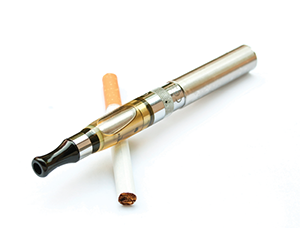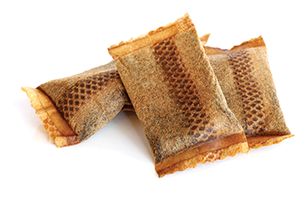 Long gone are the days of the nicotine consumer only having the choice between a cigarette, cigar or a can of dip. Today’s nicotine choices are robust, innovative and everchanging, as the modern nicotine consumer now demands convenience and expects tobacco manufacturers to meet them where they’re at.
Long gone are the days of the nicotine consumer only having the choice between a cigarette, cigar or a can of dip. Today’s nicotine choices are robust, innovative and everchanging, as the modern nicotine consumer now demands convenience and expects tobacco manufacturers to meet them where they’re at.
“The modern nicotine consumer is totally different than they were three years ago, five years ago, 10 years ago. The evolution has been absolutely incredible. Warp speed,” said Bill McCloskey, chief operating officer, RMarts, a c-store retailer with 13 locations in the Chicagoland area. “The tobacco user is not satisfied with what’s out there, so they continue to try new and different items.”
To meet the demands of today’s nicotine consumers—and to address continued health concerns about tobacco products in general—some tobacco companies are shifting their business away from combustible cigarettes. Philip Morris International, for instance, has a goal to have “smoke-free” products account for more than half of its total revenue by 2025, while Altria has said its vision is to “responsibly lead the transition of adult smokers to a smoke-free future.” In NACS State of the Industry category definitions, smoke-free nests under the subcategory other tobacco products (OTP), which includes smokeless, e-cigarettes, cigars and other forms of nicotine.
ARE CIGARETTES STILL KING?
That’s one of the biggest questions, considering that cigarette smoking rates have been in steady decline—from 20.9% in 2005 to 12.5% in 2020, according to the U.S. Centers for Disease Control. All the while, the OTP category is booming.
Not surprisingly, cigarette sales growth in the c-store channel has slowed. Prior to 2020, sales of combustible cigarettes had been on a downward trend, but during the pandemic shutdowns of 2020, sales ticked higher as work-from-home smokers seized the opportunity to light up. That year the category saw sales grow 3.6% over 2019, and then continued growth again from 2020 to 2021 (1.2%). This year, however, cigarette sales declined in five of the first six months of 2022 compared with 2021, according to NACS CSX data.
The tobacco user is not satisfied with what’s out there, so they continue to try new and different items.”
McCloskey is seeing that play out in his stores. “In cigarettes, over the last six months, we’re down about 10 to 12%,” he said.
Inflation also is influencing how consumers are purchasing cigarettes. According to Jason Zelinski, client director, NielsenIQ, consumers are downsizing in the number of cigarettes they’re purchasing, such as going from a double pack to a single pack or a carton to a pack, and they’re trading down in brands.
“If you look at all of the subcategories of cigarettes, mid-level, premium, they are in negative decline. The only one that’s in positive is economy/value,” said Zelinski.
Babir Sultan, president of FavTrip, which has three locations in the Kansas City, Missouri, area, sees this behavior among his customers. “Carton sales are down, and packs are increasing, but also those cheaper brands that no one would consider are gaining momentum now for sure,” said Sultan. That includes customer requests for FavTrip to carry 24/7 cigarettes, an economy brand. “We started off with trying out six cartons. Now, we’re ordering 28 cartons a week for just that brand alone. And that’s two months later,” he said.
Also, having an impact on sales: Tobacco companies have raised their product prices at a faster clip recently than in years past. Sultan said he used to see price increases once a year, but now, he’s seeing them almost becoming a quarterly occurrence. McCloskey said higher prices are affecting what his customers buy. “I’ve never seen the aggressive price posture that the tobacco companies are doing right now—every quarter with a sizable price increase, not just a slight increase, but over a dollar, so that’s definitely impacting the consumer,” said McCloskey.
Still, don’t count cigarettes out just yet.
Cigarettes remain the largest in-store category for convenience stores in terms of sales, according to the NACS State of the Industry Report of 2021 Data. They represented 26.18% of inside sales last year and were the third-highest gross profit contributor behind prepared food and packaged beverages. One factor in cigarettes’ c-store success is that most Americans buy their cigarettes at a convenience store. C-stores have sold 88.3% of all cigarettes in 2022 so far, according to NielsenIQ data.
Drug stores have largely given up their tobacco and nicotine business. CVS Health stopped selling all tobacco and nicotine products in 2014, and while Walgreens sells cigarettes and OTP, the company removed all e-cigarettes from its stores in 2019. Grocers are also cutting back on their tobacco and nicotine offerings.
Earlier this year, Walmart said it would stop selling cigarettes in some of its stores. However, instead of the grocery-store customers migrating to c-stores, they are going to the dollar store to get their nicotine products, according to Zelinski.
Even though cigarette sales are huge for convenience stores, the category is known for less-than-stellar margins. Margins on cigarettes decreased year over year 0.86 point in 2021, from 14.40% to 13.54%. What’s more, gross profit per store, per month decreased 4.8% year over year. “The difficulty with cigarettes is that it is a unit/volume game. The margins on cigarettes are very low, especially compared to something in the other tobacco/ nicotine space like e-cigarettes, which have sometimes double the margin,” said Jayme Gough, NACS research manager.
 OTP IS LIGHTING UP
OTP IS LIGHTING UP
According to NACS SOI data, OTP was the fifth-largest inside sales contributor and the fourth-largest inside gross margin contributor in the store last year. In-store sales for OTP grew 7.2% from 2020 to 2021, and margins for OTP are much higher than those for cigarettes. They increased 0.26 point year over year, from 29.96% in 2020 to 30.22% in 2021. Gross profit for OTP grew 8.1% year over year.
“Right now, other tobacco as a category is actually beating total c-store in sales, so other tobacco is up 5.6% versus the total store, which is 4.8%,” said Zelinski. “There’s good growth that’s happening there.”
Zelinski said typical OTP users are younger adults and more affluent, and they are more digitally engaged and more likely to order their OTP online where available. There also are new consumers in the OTP category, and while the OTP consumer isn’t coming into the store as often, there are more of them, so there’s higher penetration among the average shopper. And because OTP users typically have more disposable income, they’re willing to pay for these products, despite inflation.
However, nicotine consumers are not making a complete switch from cigarettes to OTP. “They’re poly-users,” McCloskey said. “They alternate between cigarettes, snuff and nicotine pouches.”
Trenna Harris, director of corporate analytics at Swisher, agrees with McCloskey. “[Modern oral nicotine] has not truly impacted other categories of tobacco products. So it’s your traditional tobacco consumer using it as an alternative in the marketplace,” said Harris.
Zelinski said consumers are transitioning from cigarettes to OTP somewhat, though cigarettes are still the dominant player. OTP was at $17 billion in sales last year versus $52 billion in cigarettes. “If you look at all of tobacco, 70% of sales are cigarettes versus the 30% in OTP, and that’s total OTP,” said Zelinski. However, there’s plenty of growth to be had in the OTP category, he said. “Cigarettes have been on the decline both in units and in dollars, and OTP is on a rise. And that’s been happening year over year.”
In convenience, it is definitely the pouches that have taken off and do very well for us and our competitors.”
SMALL, BUT MIGHTY
Within the OTP category, smokeless is the top subcategory in terms of percent of sales at 38.7%, indicates the NACS SOI Report of 2021 Data. In the past 52 weeks, the subcategory grew 47%, according to NielsenIQ data.
“The majority of that growth is coming from brands like ZYN. It’s the top brand right now, and it’s growing leaps over bounds,” said Zelinski. ZYN was up 41% in the 52 weeks ended October 1.
According to Swedish Match, the maker of ZYN, a pouch containing white powdered nicotine, U.S. shipments of the product were up 52% in 2021 year over year, from 114.1 million cans to 173.9 million.
“The volume growth was attributable to both increased store velocities and an increase in store count. By the end of 2021, ZYN was available in more than 120,000 stores in the U.S.,” writes Swedish Match on its website. “Based on the measure of distributor shipments to retail, ZYN is by far the largest brand in the nicotine pouch category, representing nearly two-thirds of the category volume.”
Scott Haddad, vice president at Capital Sales Company, a c-store distribution company, says nicotine pouches have gained significant traction in his business. “I’d say every month, they’re growing,” said Haddad. “People who use them don’t completely stop cigarettes or e-cigarettes, but it is that additional source [of nicotine].”
McCloskey says his stores have seen double-digit growth in nicotine-pouch sales over the past 18 months. The retailer has seen sales declines in snuff, and he believes it’s because his customers are moving to less expensive nicotine pouches rather than moist smokeless products. “They want the nicotine. They’re used to pouches, and it’s just a cheaper alternative,” he said.
Harris explains that nicotine pouches are a convenient way for consumers to get their nicotine. Rogue is Swisher’s nicotine pouch brand, and the product saw $82 million in sales and was up 84% in the 52 weeks ended October 1, according to NielsenIQ data.
“In convenience, it is definitely the pouches that have taken off and do very well for us and our competitors,” said Harris, adding that one of the things that differentiates Rogue from ZYN is the number of pouches per can. ZYN offers 15 pouches, where Rogue has 20.
Swisher also has gum and lozenge nicotine products, which are intended to be used as an alternative product within the modern oral nicotine (MON) segment for the consumer. “We focused on pouches for our initial launch into the MON segment and are now transitioning into offering a full portfolio lineup of different products, including gum and lozenges, that [consumers] can use as an alternative to traditional tobacco products,” said Harris.
 ALTERNATIVE TO THE ALTERNATIVE
ALTERNATIVE TO THE ALTERNATIVE
Though a very small percentage of in-store sales, alternative other tobacco products are on the rise and could be the next subcategory to take off. Until this year, NACS SOI data bucketed alternative tobacco products in the OTP subcategory, which has enjoyed strong sales growth in recent years. The new NACS Category Definitions, version 8.0, designate a subcategory within OTP specifically for these products called “Smokeless Tobacco Alternatives.”
Black Buffalo is an alternative tobacco company, and instead of using tobacco, its products are made from an edible leafy green that behaves just like tobacco in texture, aroma, color and flavor, except it does not have naturally occurring nicotine or other unwanted compounds specific to the tobacco plant.
“It’s for people [who were] looking for an alternative who are now looking for [another] alternative,” explained Matthew Hanson, chief growth officer, Black Buffalo.
Hanson believes the alternative to the alternative that consumers are looking for is going to be something that more closely resembles the familiarity, tradition and ritual of traditional OTP products but without the actual tobacco. “If you think about going from a Copenhagen long cut ... to a ZYN pouch, for example, that’s a radically different experience in terms of flavor, in terms of aroma, in terms of ritual, in terms of packing that pinch,” he said.
“We’re seeing so many people do that triangulation, where they wanted an alternative. The only alternative was there, and they came back to another alternative,” Hanson said.
Right now, other tobacco as a category is actually beating total c-store in sales.”
HOW TO SELL NOW
As the nicotine product market becomes increasingly crowded, and consumers grow more selective in their nicotine choices, how can retailers keep up?
McCloskey advises talking to your customers—and people who aren’t. “I have a 36-year-old son and a 31-year-old daughter, and I constantly talk to their friends. They’re trying anything that comes up, anything new, anything. They move around in category,” said McCloskey, who added that retailers also have to offer multi-pack discounts on their cigarettes.
“The days of working off of 25 cents a pack, 30 cents a pack [are gone]. You have to make more margin when you sell the category. Otherwise, you won’t survive,” he said.
Sultan also says to talk to customers and adds that retailers should not fear raising their prices. As soon as a manufacturer announces a price increase, don’t hesitate, he said. “We don’t want a single day to go by where we’re losing money. We want to make the business work,” he said.
Both Hanson and Zelinski say seeking innovation is the only way to survive in the modern nicotine space.
“People take for granted how fast innovations have come into play, and how impactful they’ve been at stores,” said Hanson. “When customers are demanding something, and innovative products are showing up, I would always give room for those.”